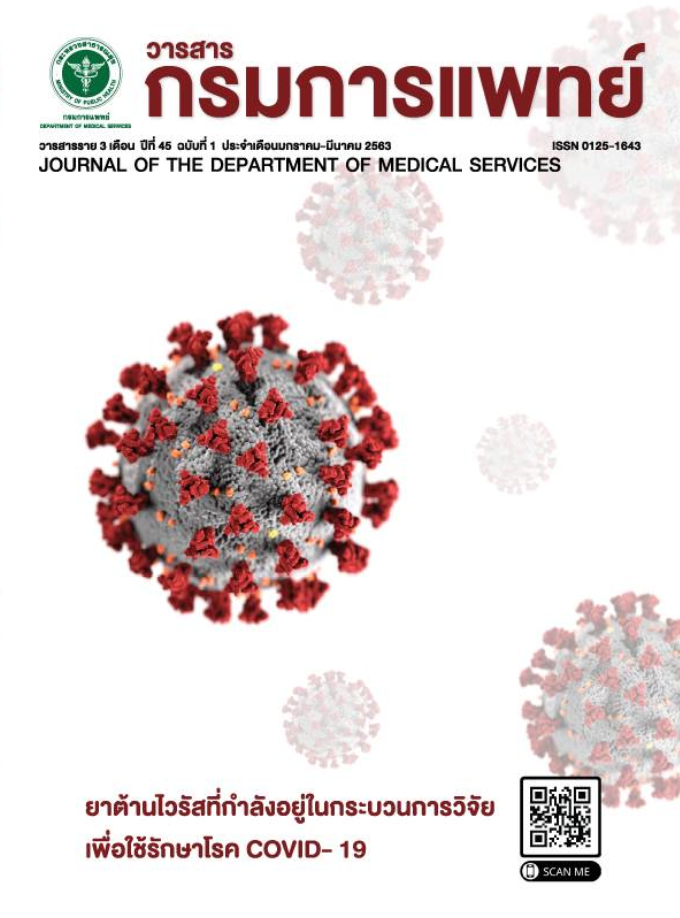One-stage and Two-stage Palatoplasty and Dental Arch Width Outcome: A Systematic Review and Meta-Analysis
Keywords:
Palatoplasty, Dental arch width, Maxillary hypoplasia, Systematic review, Meta-analysisAbstract
Background : Palatoplasty for cleft palate patients are mostly remain complications. Patients have high risk to be under secondary operations and/or orthodontics treatment. Many researchers try to find for standard surgical techniques or appropriate timing that could have resulted in satisfaction in many aspects among all disciplines involved.
Objective : The purpose of this systematic review and meta-analysis was to quantitatively find out whether variety of palatoplasty techniques have effect on the facial growth, development of maxillary arch especially transverse dental arch width.
Method : PubMed database was systematically searched for related articles, together with searching in Biomed Central, Open Access, Google scholar and hand search. They were all filtered for articles in English from 1970 until 2019. Seven articles were accepted and 7-8 datasets extracted. Comparison of One-stage and Two-stage palatoplasty by inter canine arch width (IC), inter tuberocity/ molar arch width (IT) were calculated for standard mean difference (SMD) at 95% CI and ramdom effect model were used.
Result : The result shows that the IC of two-stage technique is slightly wider than one-stage technique (SMD = 0.050; 95% CI -0.505, 0.604; p = 0.861). The IT of two-stage technique is slightly narrower than one-stage technique (SMD = -0.018; 95% CI -0.540, 0.505; p = 0.987). Both have no statisticaly significant. Due to the hight heterogeneity of data (I2 = 77.7% and 78.7%) and wide range of CI, subgroup analysis were done between the measurement <5 years and >5 years of ages. The heterogeneity remain high but only the inter canine arch width of <5 years has a decrease value of I2 (I2 = 63.6%).
Conclusion : One-stage and Two-stage palatoplasty have small diffences, no statistically significance. The results evidence suggests that high inconsistency were noted in both groups. The reason for heterogeneity remains obscure. However, the validity of the evidence is limited and further high-quality trials are needed.
References
Stein MJ, Zhang Z, Fell M, Mercer N, Malic C. Determining postoperative outcomes after cleft palate repair: A systematic review and meta-analysis. J Plast Reconstr Aesthet Surg 2019; 72: 85–91.
de Ladeira PR, Alonso N. Protocols in cleft lip and palate treatment: systematic review. Plast Surg Int 2012;2012: 562892.
Timbang MR, Gharb BB, Rampazzo A, Papay F, Zins J, Doumit G. A systematic review comparing furlow double-opposing Z-plasty and straight-line intravelar veloplasty methods of cleft palate repair. Plast Reconstr Surg 2014; 134: 1014-22.
Schilling GR, Cardoso MCAF, Maahs MAP. Effect of palatoplasty on speech, dental occlusion issues and upper dental arch in children and adolescents with cleft palate: an integrative literature review. Rev. CEFAC. 2019; 21:e12418. doi: 10.1590/1982-0216/201921612418.
Liau JY, Sadove AM, van Aalst JA. An evidence-based approach to cleft palate repair. Plast Reconstr Surg 2010; 126: 2216-21.
Yang IY, Liao YF. The effect of 1-stage versus 2-stage palate repair on facial growth in patients with cleft lip and palate: a review. Int J Oral Maxillofac Surg 2010; 39: 945–50.
Slim K, Nini E, Forestier D, Kwiatkowski F, Panis Y, Chiponi J. Methodological index for non-randomised studies (minors): development and validation of a new instrument. ANZ J Surg 2003;73: 712–6.
Kitagawa T, Kohara H, Sohmura T, Takahashi J,Tachimura T, Wada T, Kogo M. Dentoalveolar growth of patients with complete unilateral cleft lip and palate by early two-stage furlow and push-back method: preliminary results. Cleft Palate Craniofac J 2004; 41: 519-25.
Stein S, Dunsche A, Gellrich NC, Harle F, Jonas I. One- or two-stage palate closure in patients with unilateral cleft lip and palate: comparing cephalometric and occlusal outcomes. Cleft Palate Craniofac J 2007; 44: 13-22.
Pradel W, Senf D, Mai R, Ludicke G, Eckelt U, Lauer G. One-stage palate repair improves speech outcome and early maxillary growth in patiens with cleft lip and palate. J Physiol Pharmacol 2009; 60: 37-41.
Carrara CFC, Ambrosio ECP, Mello BZF, Jorge PK, Soares S, Machado MAAM, et al. Three-dimensional evaluation of surgical techniques in neonates with orofacial cleft. Ann Maxillofac Surg 2016; 6: 246-50.
Gundlach KKH , Bardach J, Filippowa D, Stahl-de Castrillon F, Lenz JH. Two-stage palatoplasty, is it still a valuable treatment protocol for patients with a cleft of lip, alveolus, and palate? Journal of Cranio-Maxillo-Facial Surgery 2013; 41: 62-70.
Yamanishi T, Nishio J, Kohara H, Hirano Y, Sako M, Yamanishi Y, et al. Effect on maxillary arch development of early 2-stage palatoplasty by modified furlow technique and conventional 1-stage palatoplasty in children with complete unilateral cleft lip and palate. J Oral Maxillofac Surg 2009; 67: 2210-6.
Eriguchi M,Watanabe A, Suga K, Nakano Y, Sakamoto T, Sueishi K, et al. Growth of palate in unilateral cleft lip and palate patients undergoing two-stage palatoplasty and orthodontic treatment. Bull Tokyo Dent Coll 2018; 59:183-91.
Ryan R. Cochrane Consumers and Communication Review Group. [Internet] 2019. [cited 2019 Nov 20]. Heterogeneity and subgroup analyses in Cochrane Consumers and Communication Group reviews: planning the analysis at protocol stage. Available from: http://cccrg.cochrane.org.
Higgins JP, Thompson SG, Deeks JJ, Altma DG. Measuring inconsistency in meta-analyses. BMJ 2003; 327:557–60.
Lehner B, Wiltfang J, Strobel-Schwarthoff K, Benz M, Hirschfelder U, Neukam FW. Influence of early hard palate closure in unilateral and bilateral cleft lip and palate on maxillary transverse growth during the first forur years of ages. Cleft Palate Craniofac J 2003: 40: 126-30.
Dissaux C, Grollemund B, Bodin F, Picard A, Vazquez MP, Morand B, et al. Evaluation of 5-yearold children with complete cleft lip and palate: multicenter study. Part 2: functional resualts. J Craniomaxillofacial Surg 2015;44: 94-103.
Lisson JA, Schilke R, Trankmann J. Transverse changes after surgical closure of complete cleft lip, alveolus and palate. Clin Oral Investig 1999; 3:18-24.
Loomans N, Decombel O, Goethals K, Mommaerts MY. Transverse maxillary development in complete cleft patients: comparison of 2 treatment strategies by longitudinal and cross-sectional model analysis. Cleft Palate Craniofac J 2019;56: 610-8.
Downloads
Published
How to Cite
Issue
Section
License
บทความที่ได้รับการตีพิมพ์เป็นลิขสิทธิ์ของกรมการแพทย์ กระทรวงสาธารณสุข
ข้อความและข้อคิดเห็นต่างๆ เป็นของผู้เขียนบทความ ไม่ใช่ความเห็นของกองบรรณาธิการหรือของวารสารกรมการแพทย์



